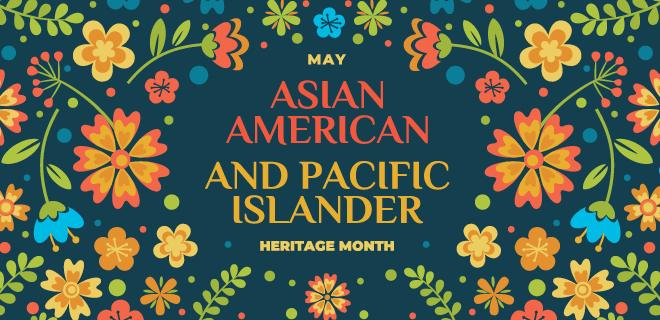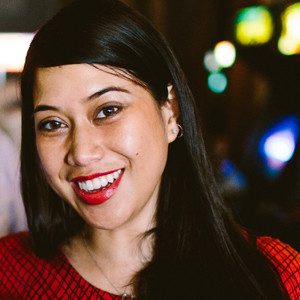
With a career covering the gamut of every aspect of ad tech, Glenda Bautista-Baker, Senior Director of Product, PMC, is a shapeshifter of sorts. Whether it’s the sales side, product, or data analytics, Glenda developed a bird-eye view of the ecosystem. This experience has made her a unique problem-solver.
She is now stepping into a new era in her career, one that started with a tale of misfortune. Her previous company laid Glenda off because companies industry-wide were cutting costs due to the recession, but she didn’t let that pitfall stop her. She told her story on LinkedIn, a moment of vulnerability that took a lot of courage, and landed her new role at PMC.
“That post is still hard for me to look at,” said Bautista-Baker. “I used to be a journalist, and maybe I work in digital media because I believe in uncovering the truth. If it’s a universal truth, even better. When talking about something is very difficult, if you push through the pain; usually, there is truth or beauty – or hopefully, both, on the other side that others can benefit from.”
In honor of AAPI Heritage Month, we spoke with Glenda about how she started her career, her new role at PMC, and AAPI representation in the industry.
Andrew Byrd: How did you start your career in digital media and ad tech? 
Glenda Bautista-Baker: I’m a DoubleClick O.G. – I had the great fortune of landing my first job out of college as an ad trafficker at DoubleClick – so way back in the salad days of online advertising. I started a few months after they had IPO’d and worked on their sponsorship sales team as their technical sales engineer.
There wasn’t a precedent for anything in those days or a whole lot of definition behind roles, so I spent all of my 3+ years there soaking in the opportunities to explore uncharted waters, doing all sorts of things outside of my wheelhouse on a case-by-case basis, hacking things together and eventually getting things to work. I loved those years and lived at the center of Silicon Alley’s first boom and bust.
I learned and did a ton, and inventing something new every day felt really special. Anyone from that era could tell you that it was fun and crazy times, and you could never recreate that time, place, and culture – no matter how many ad tech companies we could launch or work for after that point. It was a magical, shared experience that I think many of us DoubleClick alumni treasure, and the fingerprints of “Clickers” are still all across this industry.
AB: You recently took on the Senior Director of Product position at Penske Media Brand. Can you tell me about your role and what your experience has been like so far?
GB: Yeah, that’s a super recent development! I have all the boundless optimism of Ted Lasso right now and just finished my second week at PMC. I’m drinking from the firehose, getting the lay of the land, and finding my place within it.
My role is within the Penske corporate team’s technology organization, encompassing the product, engineering, and project management teams and functions. My squad is focused on revenue technology and PMC’s technology and platforms as they apply to direct and programmatic revenue and operations, audience data solutions, and just about anything adjacent to it, like legal and privacy, analytics, data, and content management. We work in service to the many iconic brands that PMC owns and operates, which also includes the SHE Media Collective.
AB: You have worked as director of products throughout your career, but you have worked on all sides of the ad tech and digital media industry. How has that experience helped your current position?
GB: I like to call this my “Multiverse of Madness” – I can often see a problem from a variety of angles and, in some cases, have a 360-degree view of what’s going on, mainly because I’ve held or interacted with other related roles at some point in my career.
I know the customers in this ecosystem well – I’ve been the customer in many cases, so it’s easy for me to connect the dots and draw associations, figure out where the knowledge gap is, and know where to look and whom to talk to, to fill that gap. Understanding multiple perspectives is easy because I’ve worn all sorts of hats. Holding various roles or approaching the problem from numerous angles gives you all the shortcuts to move into a future state faster, like playing a game and anticipating your opponent’s next moves.
AB: You recently posted about how the tech layoffs affected the industry and your personal life. It was courageous of you to be vulnerable enough to share that with your LinkedIn community, but I’m sure it hit home for many people struggling because of the recession. What do you make of this time in the industry, and how would you suggest others navigate it?
GB: It’s a dark time for the Rebellion. What is happening right now is painful and gut-wrenching, and livelihoods are at stake. Companies look for any excuse to cut costs and make do with less. Seeing the industry leaders in the space scale back so dramatically when they are generally among the most stable of employers should give anyone pause.
Regardless of where you are in the ad tech ecosystem, if you’re job hunting, you should directly use your professional understanding of advertising and marketing to cut through the noise on LinkedIn’s platform. You are the product being advertised; your LinkedIn profile or resume is the ad. Use your knowledge of the platform to your advantage. Leverage everything you know about advertising and marketing and consuming content, mainly because we’re in the business of this; we should know how it works, right?
AB: All industries are trying to support DEI initiatives as a part of their business strategy. How do you believe the ad tech and digital media industries are handling this, especially regarding AAPI representation? Do you see practical change happening?
GB: Ad tech has long understood the benefit of marketing to the various AAPI groups with specificity and the advantage of having language as a digital signal that tailors messages to each of the communities in the diaspora. I would say that one of the things that makes the “AAPI” banner a challenge is that we are not united linguistically and culturally. So there are natural divisions and barriers when discussing marketing under the AAPI umbrella.
Digital media has done a lot in terms of amplifying the voices and stories of the AAPI community as of late. For every news article I’ve read on violence against the AAPI community, I’ve reveled in the recent visibility of Michelle Yeoh and Ke-Huy Quan. Both types of articles, I realize, would be relegated to a less prominent news item position if published in the pre-COVID era.
As with most things, there’s always room for improvement, and progress varies across organizations and industries. In the workplace, I see practical change happening, and while diversity, equity, and inclusion are essential, I consider belonging the most important of all these strategies. These efforts would benefit from DEIB – where the “B” is for Belonging.
The companies that do belong well and do their best to go beyond DEI benefit significantly. Fostering and creating those safe spaces for the BIPOC and LGBTQIA+ communities is the authentic difference between being performative about DEI versus seeing the change you inspire in others reflected in you. It’s a longer-term strategy but worthwhile because it is a basic human need to belong.